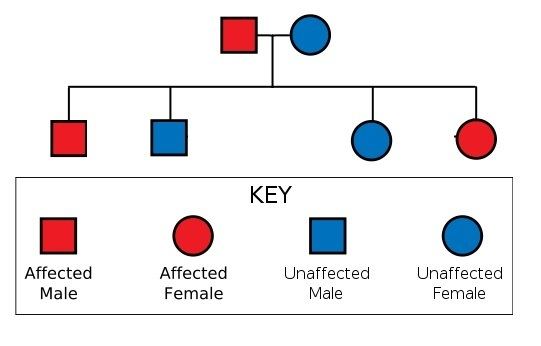 | ||
Mendelian traits in humans concerns how, in Mendelian inheritance, a child receiving a dominant allele from either parent will have the dominant form of the phenotypic trait or characteristic. Only those that received the recessive allele from both parents, known as zygosity, will have the recessive phenotype. Those that receive a dominant allele from one parent and a recessive allele from the other parent will have the dominant form of the trait. Purely Mendelian traits are a tiny minority of all traits, since most phenotypic traits exhibit incomplete dominance, codominance, and contributions from many genes.
Contents
- Examples
- Questionable traits
- Traits previously believed to be Mendelian
- Blood group inheritance
- References
The recessive phenotype may theoretically skip any number of generations, lying dormant in heterozygous "carrier" individuals until they have children with someone who also has the recessive allele and both pass it on to their child.
The human Y chromosome is composed of about 59 million base pairs and is passed virtually unchanged from father to son. The mitochondrial DNA (mtDNA) comes only from the mother and is given to both male and female children.
Examples
These traits include:
Questionable traits
May be Mendelian but there is conflicting evidence:
Traits previously believed to be Mendelian
Some traits were previously believed to be Mendelian, but their inheritance is likely based on more complex genetic models, possibly involving more than one gene. These include:
Blood group inheritance
Blood groups that children may inherit from their parents.
